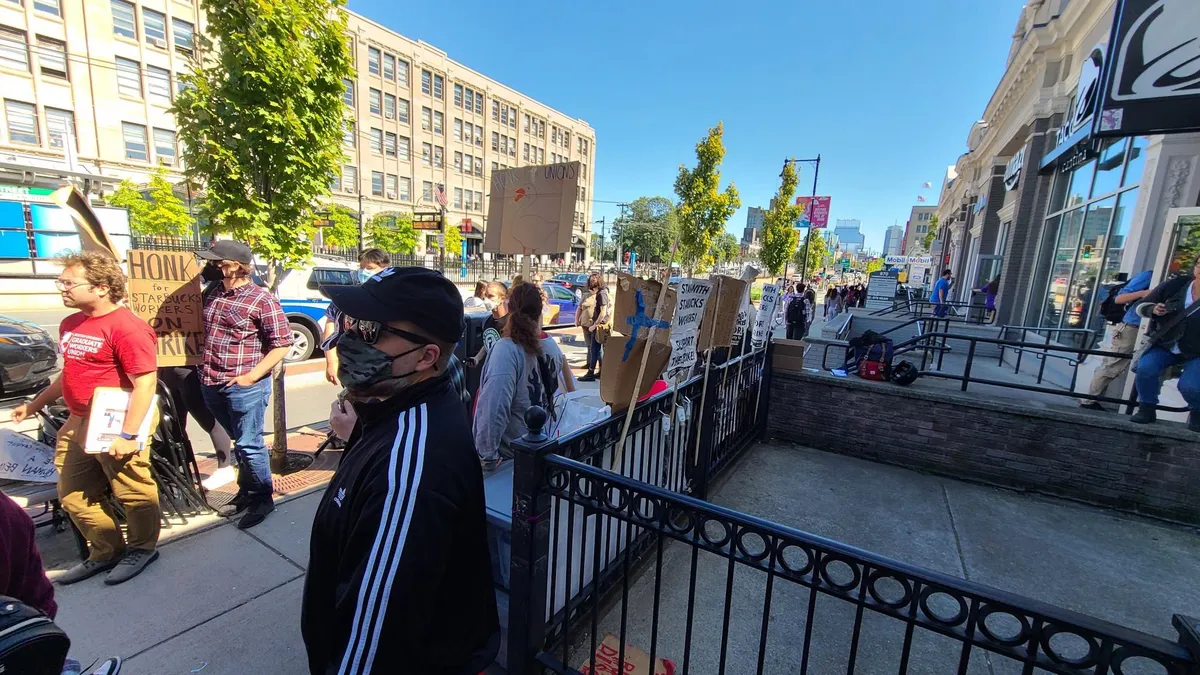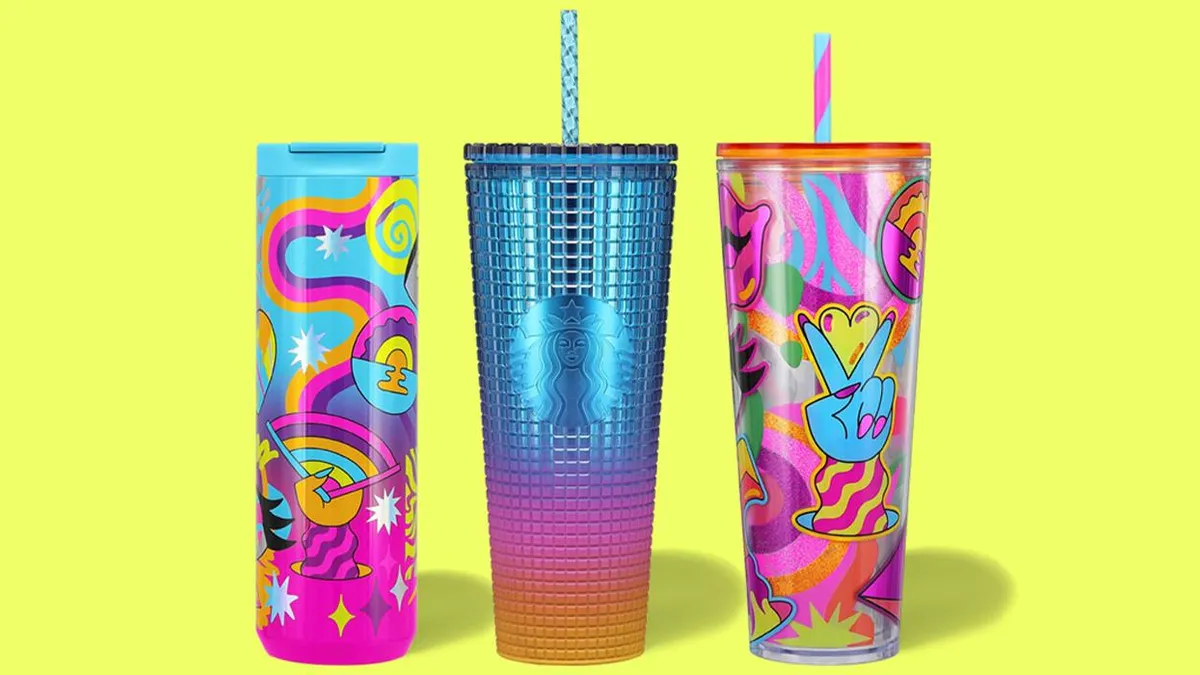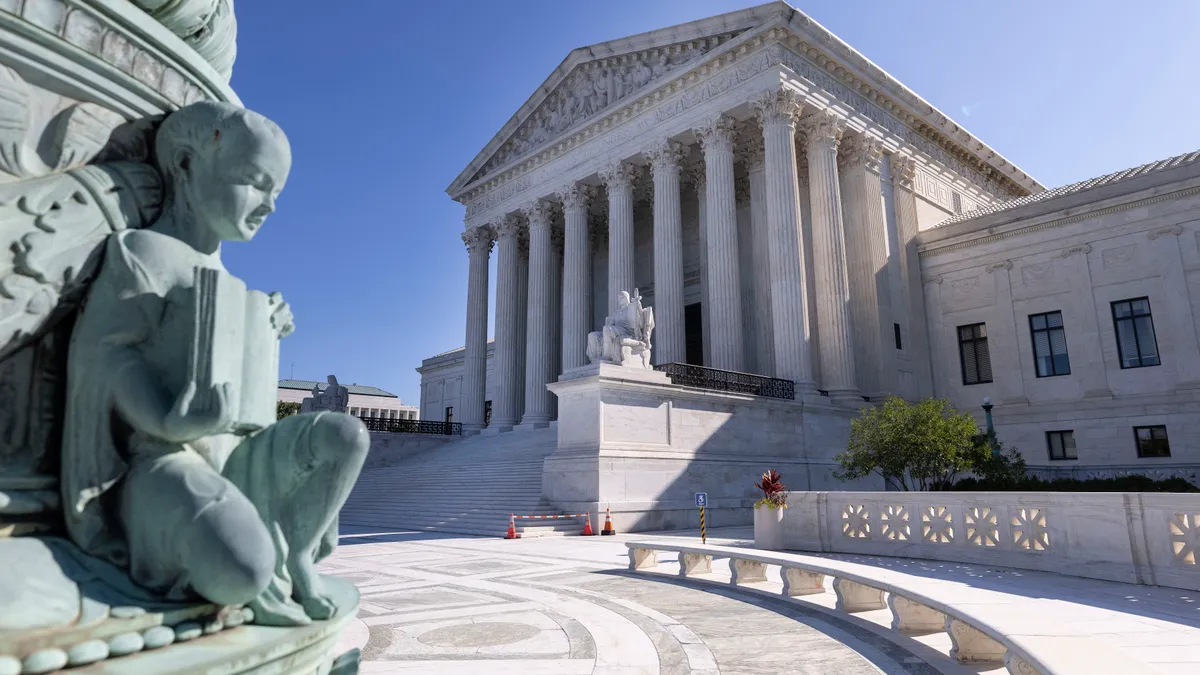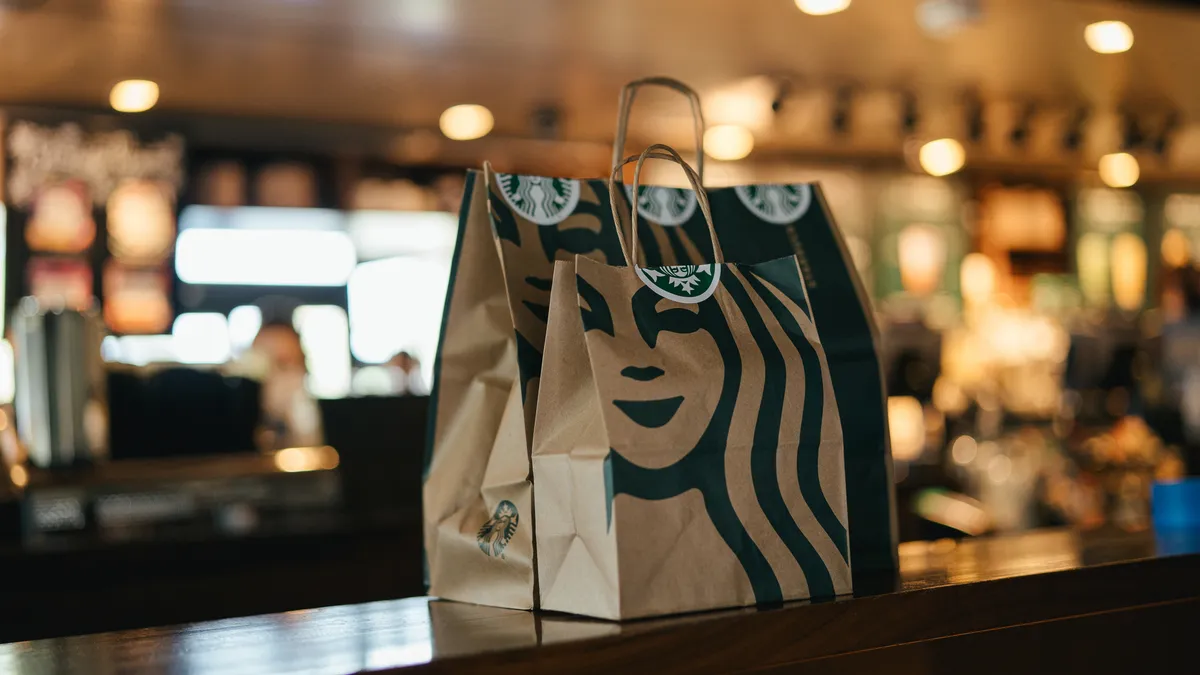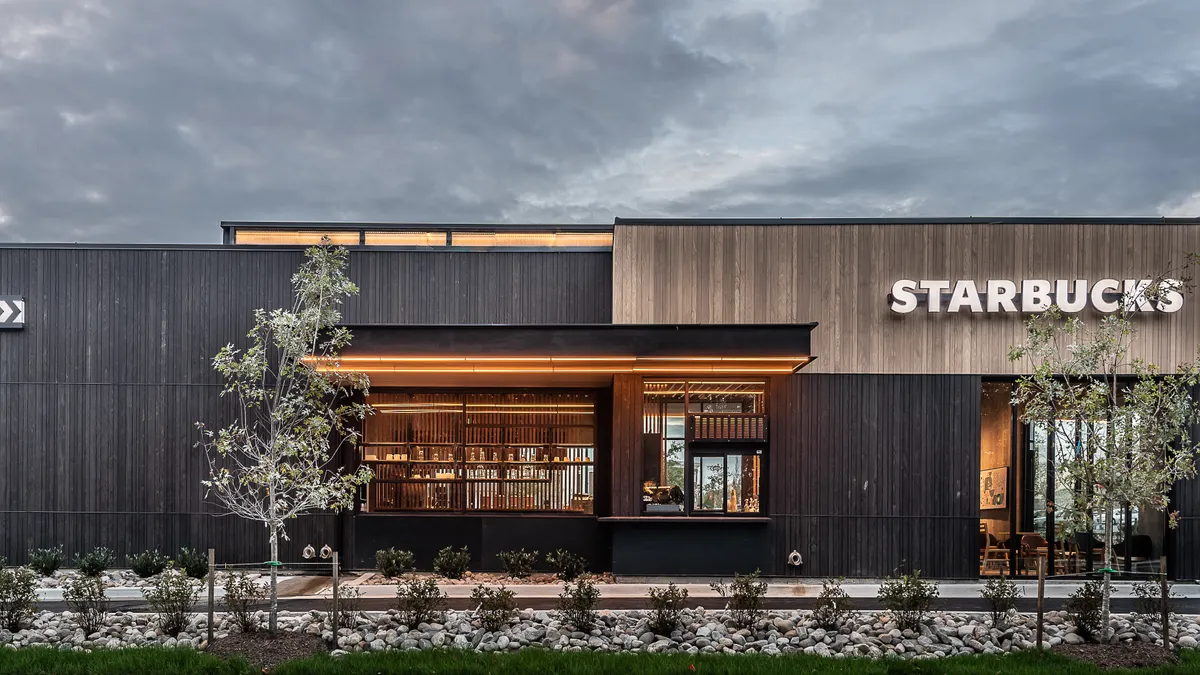On Thursday, Starbucks Workers United's campaign reached 101 stores in 26 states, meaning about one in every 100 corporate-owned U.S. Starbucks cafes has announced a public union drive. That momentum, which accelerated in December in New York, continues despite Starbucks' efforts to stall votes.
On Wednesday, the National Labor Relations Board postponed a scheduled union vote count at a Mesa, Arizona, Starbucks. The NLRB was unable to reach a decision on Starbucks' request for review of the NLRB regional director's election order.
Region 28 of the NLRB, based in Phoenix, will impound the unopened ballots until the board reaches a decision. The votes were cast by workers at the Power Road and Baseline Road Starbucks in Mesa via a mail-in election conducted between Jan. 19 and Feb. 2. The vote count was originally scheduled for Wednesday.
"[Starbucks is] going to lose the requests for review," Ian Hayes, a lawyer for Starbucks Workers United, said at a union press conference Wednesday afternoon. "They just wanted to try to break the workers' momentum by depriving them of the victory today."
Starbucks has argued that workers shouldn't vote on a store-by-store basis, but instead vote by regional markets, NLRB records show. Hayes claims this argument contradicts standing labor law, and labor experts interviewed by Restaurant Dive agree that store-by-store elections have been an NLRB precedent for over 50 years.
The campaign at the Mesa store began in earnest when a manager was allegedly terminated after sending documents outlining the company's anti-union efforts to Starbucks Workers United, Michelle Hejduk, a shift supervisor and organizing committee member at the cafe, said. Starbucks disputed this claim, arguing the manager in question, Brittany Harrison, was not fired, but instead resigned.
A few days after Harrison stopped working at Starbucks, Hejduk said store employees made contact with Workers United and secured majority support among staff to join the union. Then, management held meetings where managers asked employees to vote against unionization, Hejduk said. Starbucks also sent several anti-union text messages to workers at the Mesa store throughout the election.
"Every other day at noon we get a text message [from Starbucks on] our phones that tells us 'We want you to vote no… so the tension that this union has caused will end'," Hejduk said. "There actually is absolutely no tension in our store."
The Mesa store was the first Starbucks outside of the Buffalo area to file for a union election. It filed on Nov. 18, about three weeks before the union won representation at two Buffalo-area stores.
Eighty-seven stores have petitioned for elections with the NLRB but have not held elections yet. Four stores have voted — with the union winning two and Starbucks winning one election — and 10 have announced campaigns but the NLRB doesn’t yet have records showing they filed for elections.
Starbucks' response has differed store by store
Starbucks' response to stores petitioning for unions has varied. For instance, while Rossann Williams, president of Starbucks North America, spent much of the Buffalo Starbucks stores' early campaigns on the ground speaking with workers, executives did not conduct listening sessions at the Mesa cafe, Hejduk said. The company sent five new managers to Mesa, Hejduk said, because the store had just one assistant store manager after Harrison was fired. But those managers left after voting concluded on Feb. 2, she said.
Starbucks debuted a website at one.starbucks.com on Monday explaining its anti-union stance. The page also includes a "10 things to know about a union" section detailing how long it typically takes unions and employers to reach a contract and consequences that come with unionization, including fees and difficulty swapping shifts with non-union stores.
"We don't believe having a union will meaningfully change or solve the problems you've identified in your stores," Starbucks' site reads. "Every success we have ever achieved has been in direct partnership with one another."
Union organizers created a similarly named website, onestarbucks.com, which redirects to Starbucks Workers United's page. This marks the union’s latest move to undermine Starbucks’s anti-union efforts. In Chicago on Feb. 1, pro-union picketers stood outside one of the unionizing Starbucks locations while managers inside spoke with workers about the union.
"It would not even touch [Starbucks'] balance sheet to shut down 100 stores. They probably shut down 100 stores anyway, every year, because they aren't functioning."

Nelson Lichtenstein
Professor of history, University of California Santa Barbara
Starbucks also fired seven members of a union organizing committee in Memphis, Tennessee, on Feb. 8. Reggie Borges, a Starbucks spokesperson, said these workers let a media team into the store after hours to conduct an interview. Allowing unauthorized individuals into stores after operating hours is a fireable offense, Borges said, adding the firing was not an act of retaliation — though Starbucks Workers United considers it union busting.
The union compared the interview at the Memphis Starbucks to the after-hours meetings Starbucks has asked workers to attend, and alleges Starbucks has not consistently enforced its policies, per a press release emailed to Restaurant Dive.
"Starbucks is using policies that have never been enforced… to fire workers," the union stated.
"We as partners should not be afraid to speak to the media, to organize our stores, or to fight for our right to have a union," Beto Sanchez, one of the fired workers, said in a statement.
Starbucks Workers United organized protests in several cities, including Seattle and New York, to protest the firing of the Memphis workers. Public records indicate the workers have filed an unfair labor practices charge through the NLRB.
The union has reached flagship stores
Disputes between Starbucks and the union haven't hurt organizer momentum, however.
The campaign reached New York City on Feb. 10, when workers at three locations in New York City and one store on Long Island filed for union elections, NLRB records show. Among those workers were manufacturing employees at the company's Reserve Roastery in the Big Apple. In Seattle, a second roastery filed for an election on Valentine's Day, leaving the Chicago Reserve Roastery as the only one of Starbucks three flagship stores in the U.S. to not file for a union election.
Miguel Pérez-Glassner, a barista at the New York City Reserve Roastery, said he supported the union drive because it would give workers a greater say on the shop floor.
"I care about movements that want to make a place where the workplace is democratized, where people are able to, you know, figure out what is best together," Pérez-Glassner said. "People in management positions don't necessarily know what's going on with people on the floor… that's a big disconnect… that collective bargaining, and unionizing would really, really help people with."
Pérez-Glassner emphasized the union drive is not about fighting Starbucks, at least not for him.
"We're not trying to tear anybody down. … We want to be able to have a seat at the table," Pérez-Glassner said.
The union has gained political support, as well. New York lawmakers — including Senate Majority Leader Chuck Schumer and Reps. Alexandria Ocasio-Cortez, Jamaal Bowman and Jerry Nadler — signed a letter asking Starbucks to sign on to the fair elections principles proposed by Starbucks Workers United. This proposal would give union organizers the ability to hold meetings on company time.
Political pressure has also mounted in Starbucks' hometown of Seattle, where Kshama Sawant, a socialist and city council member, introduced a resolution supporting Starbucks Workers United. The Seattle City Council passed the resolution on Feb. 8. The city has emerged as a stronghold in the union fight, with three stores filing for union elections alongside the Seattle Reserve Roastery. A fifth store in Everett, Washington, has also filed for an election.
Delay weakens unions, but Workers United may have a path to minority bargaining
To pump the brakes on this cultural and store-level momentum, Starbucks generally files similar objections to the NLRB when cafes petition for a union election, according to labor experts. Nelson Lichtenstein, a professor specializing in labor history at University of California Santa Barbara, said this is part of a time-tested strategy that capitalizes on the naturally high turnover in fast food businesses.
"Delay is absolutely vital, and a winning strategy. Just delay, delay, delay whatever you're doing, whether it's the vote or the union contract or anything. Just delay it, and in a year, half a year, half the workforce is gone," Lichtenstein said.
But Lichtenstein said the composition of Starbucks' workforce, and the demands of pro-union employees, weaken that strategy. When workers only want better pay or different benefits, it's easy for a company to stave off a challenge by changing specific conditions in compensation, he said. But when workers want a union to gain more power in the workplace, it's harder for companies to outmaneuver the union organizers.
Starbucks, which offers higher education benefits, may attract younger, educated workers, a demographic that could be more interested in unionization, Lichtenstein said. Many of the workers Restaurant Dive has interviewed are students or have college degrees, and several are self-described communists.
"It's the same sort of social cultural age category as graduate students … who are unionizing [or] young web-based journalists and game [developers]. ... It's a kind of social strata," Lichtenstein said.
The union may be able to win enough stores and public support to have some bargaining power even if it doesn't win a majority of Starbucks stores, Lichtenstein said. He cited Costco as an example of a company where the union represents a minority of workers. The union fears the company could resist a strike and maintain labor peace, avoiding a company-wide union fight while attracting workers with marginally higher pay than competitors, Lichtenstein said.
If unionization drives higher wages, this could help retain and attract workers. U.S. Bureau of Labor Statistics data shows foodservice workers represented by unions earned about $118 dollars a week more than unrepresented workers.
But Starbucks Workers United is nowhere near the level of organization needed to bring Starbucks to the bargaining table on a national scale, Lichtenstein cautioned.
"It would not even touch [Starbucks'] balance sheet to shut down 100 stores," Lichtenstein said. "They probably shut down 100 stores anyway, every year, because they aren't functioning."
Prior to major shutdowns due to COVID-19, Starbucks had closed more than 100 stores in a single year. In 2018, Starbucks announced it would close 150 underperforming stores in 2019.
Still, public outcry could constrain Starbucks actions, Lichtenstein said, especially if unions become more popular, or if consumers begin to shun companies with a reputation for union busting.
Correction: A previous version of this article misstated the number of Starbucks stores that have public union organizing drives. Currently, 101 stores have public union organizing drives.

















